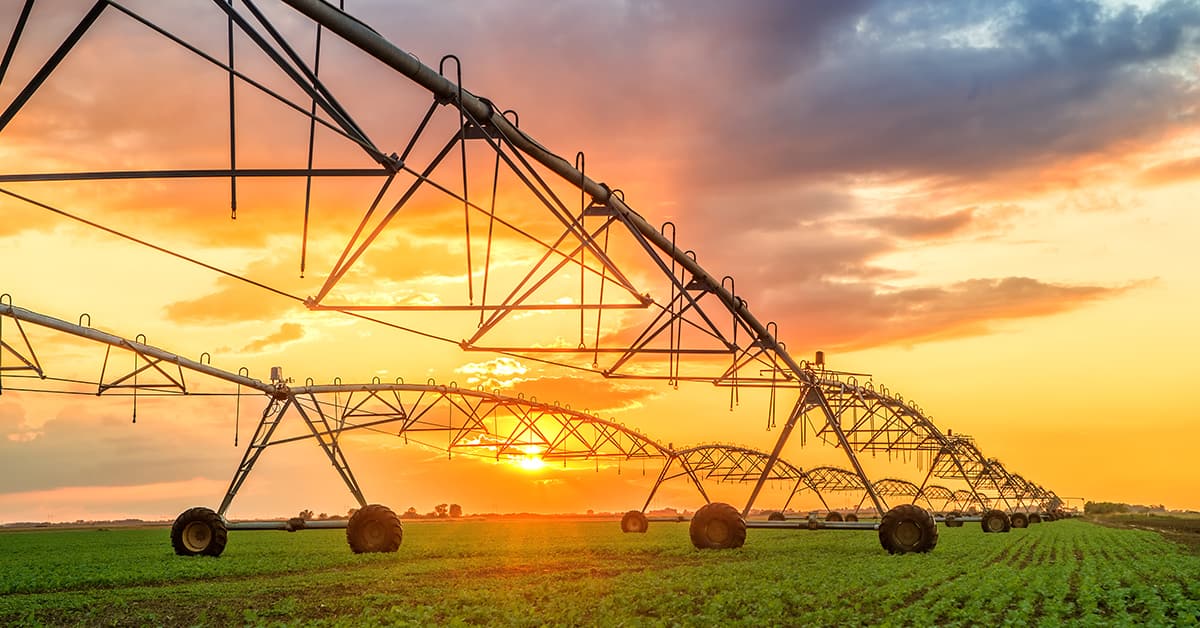Despite unfortunate events, global agribusiness remains resilient—which is good, because all the world needs food.

A perfect storm hit the global agricultural market this year—or, in some places, a perfect drought. The war in Ukraine; global post-pandemic supply-side disruptions; record droughts in Europe and China; frosts in Brazil; Hurricane Ian in Florida; and unusually heavy rains and floods in India, Pakistan and Australia combined in 2022 to test the limits of the current production and retail chain of food supplies.
“Several issues affected supply, but three years of La Niña and the war in Ukraine are the two major factors there,” says Carlos Mera Arzeno, head of Agri Commodities Markets Research at Rabobank.
The current challenges add to the strain on an already strained market. In 2012, the Food and Agriculture Organization of the United Nations (FAO) estimated that by 2050 we will need to increase food output by 60% based on a business-as-usual scenario. “The global food market faces the challenge of feeding a growing population, which should reach 10 billion people by 2050. It is not a trivial task,” explains Christiane Assis, director of investor relations at food processing company JBS.
The FAO’s benchmark Food Price Index shows that food prices rose from July 2020 to February of this year at the fastest pace in a decade due to increasingly tighter stocks, especially in the wheat and corn markets.
A tighter grains market also imposes significant challenges for the livestock industry, given that wheat and corn are the main components of animal feed.
Another critical issue is Western sanctions on Russian exports, as the country is the world’s largest supplier of fertilizers used in planting nearly every agricultural commodity in the world.
Higher prices and tighter stocks have increased food security risks, especially in developing economies. A September joint statement by the FAO and the International Monetary Fund states that “the number of people facing acute food insecurity worldwide is expected to continue to rise.”
Improving Outlook
But there is a silver lining. Recent developments in the global agricultural chain indicate that the market may have begun to respond to the current challenges with incredible resilience—at least in the short term.

The FAO’s Food Price Index has been subsiding in the last six months. The two main reasons are lower oil prices and an improving outlook in the grains market, the most affected by the partial shutdown of one of the world’s breadbasket regions (Ukraine), sanctions on Russia and the largest drought in Europe since the Middle Ages.
While grain production in the EU is still on track to hit a 15-year low, the International Grain Council forecasted in September that the total global output should rise by 8 million tonnes for the 2022-2023 marketing year. Solid crops in China—the world’s largest producer—and higher-than-expected exports from Brazil and the US are the main reasons for the more relaxed market.
“I don’t see a full crisis. We may be on the doorstep of one, but it is not here today. And I say that as the world has plenty of grain,” explains Dan Basse, president of Chicago-based agricultural market research company AgResource. “If you have a South American drought or something of that calamity, that may get us there; but today we are really not there.”
As he explains, the interconnectivity of the current global agricultural market has been of critical importance in this year’s tense times. “The good thing about the world these days is we produce a crop in every hemisphere every six months. So we need only enough stocks to get to the next harvest,” adds Basse. “Production and consumption chains are increasingly globalized and interdependent,” agrees JBS’ Assis.
Basse points out that the better-than-expected outlook also comes from the demand side. “We believe markets may be rolling over because we’re lacking demand. In the first quarter of the wheat year, trade was down 19%. And so, obviously, world buyers and end users are reacting to the very high price of wheat by using less.”
Long-Term Challenges
Despite the improving short-term outlook, the grains market should remain dangerously tight as long as the war in Ukraine continues. Over the past two decades, the global wheat-planting area expanded mainly in Russia and Ukraine. In fact, according to estimates by the US Department of Agriculture, the Black Sea region’s wheat outflow climbed from 10% of total global exports in the early 2000s to about 26% by the time the war broke out.
Those factors will likely lead to grain prices staying significantly above the historical average in the long run. “We think the price range has permanently moved up in the grains market,” says Basse.
One of Italy’s major agribusiness lenders, Intesa Sanpaolo, also sees a difficult road ahead, especially for Europe’s agricultural market. “Right now, businesses are facing unexpected costs that are likely to undergo further increases in the coming months, putting production and employment at risk,” says Stefano Barrese, head of Intesa Sanpaolo’s Agri Division.
But while rising prices pose several challenges for the global economy, they also drive the expansion of global farmland—a key component to meeting the FAO’s food production goal for 2050.
“Grain prices will need to remain high in order to incentivize expansion,” says Rabobank’s Arzeno. A point with which AgResource’s Basse strongly agrees. “The job of the market is to reach price levels that will buy 25 million extra acres,” he says.
Who Will Pick Up the Slack?
With the EU and the US already at peak farmland, and China’s arable land shrinking by nearly 6% in the past decade, investors are looking increasingly into South America as a critical region for new cropland expansion.
“We estimate that the world needs to bring another 25 million acres of cropland in the next five years to balance things out. Most of that land will have to come from South America,” explains Basse.
While the continent’s agricultural market was already undergoing significant expansion in 2021, the war in Ukraine appears to have accelerated the process. Brazil’s agricultural exports rose 29.4% in the first half of 2022, pointing to a new record for the period. Likewise, neighboring Argentina posted record corn exports in the first quarter. Colombia, Ecuador and Uruguay have also received a boost in their GDP on record food exports.
“Latin America, and Brazil in particular, have a fundamental role in the challenge of feeding the world’s population,” says JBS’ Assis. “This was a reality even before the war in Ukraine, but the fact that the Black Sea region is an important producer of food and inputs further increases the responsibility of Latin America in securing the global food supply.”
But as Latin America’s cropland expansion appears to be the market’s main bet in the short term, the broader challenges for the industry will require much more profound changes in the global food production chain.
“In the short term, the food industry is expected to weather any recession relatively well. However, looking further ahead, the main challenge will be to contribute to the race to net-zero carbon emissions, where changes at the farm level can sequestrate carbon and have a positive impact,” says Arzeno. “Food has been part of the problem for a long time; but in many cases, it can become part of the solution,” he concludes.



